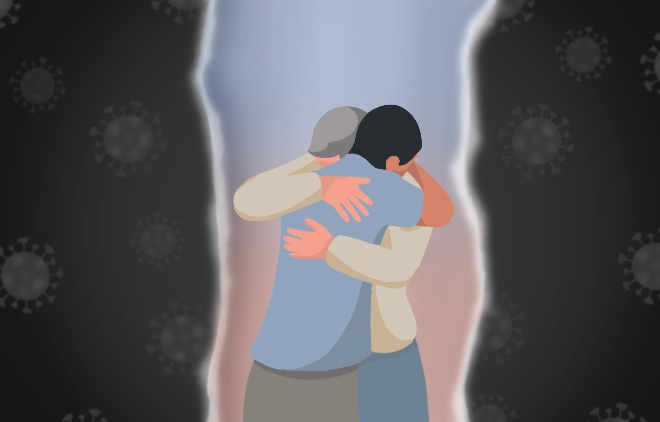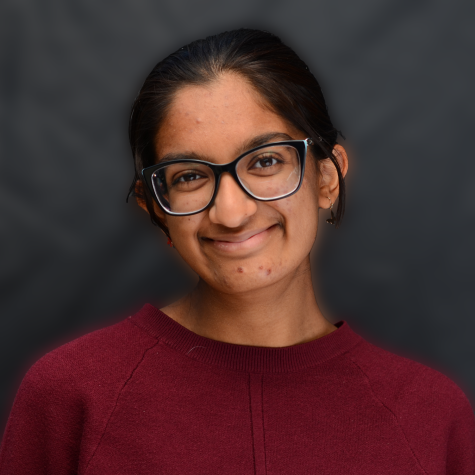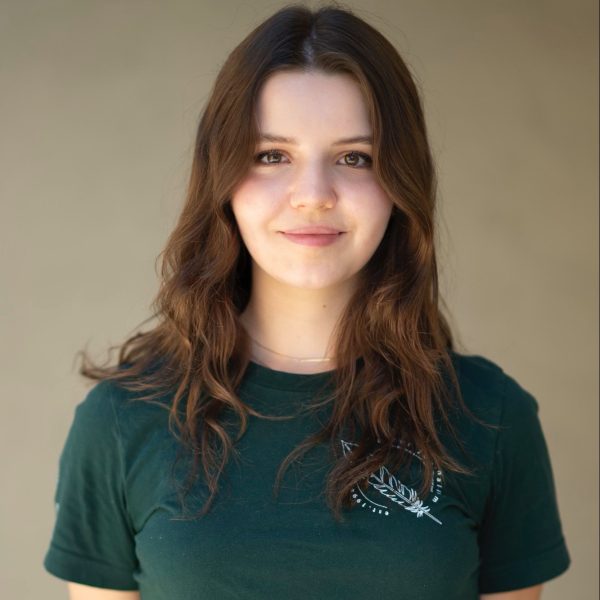Magic in a post-lockdown hug: Staying grounded in small joys
We should not seek a “new normal,” as expansive and ambiguous that term may be, and rather focus on the small freedoms allowing connections that are again available to us. That can look like passing goggles to a lab partner in chemistry class, stealing half a cookie off of an unsuspecting friend’s tray or focusing all your affection for a person into the magical world in the space of a tight hug.
June 6, 2022
I wanted to be Belle when I was little. Here was a Disney princess that gave me the representation on the silver screen that I needed: she would actively avoid social interaction to read books all day, preferably in a castle. Even happier for her, she eventually got to wear a yellow ball gown that strongly resembled a large, frosted, fashionable cake.
So, naturally, when my small six-year-old self went to Disneyland for the first time, I disregarded the rides, food and fireworks to purposefully toddle right toward the costumed characters, where actors dressed up as Disney figures like Mickey Mouse and Goofy to meet briefly with kids like me. When I finally reached the front of the line to see Belle, I remember being in awe of shaking hands with a real princess and how her towering tulle skirts swirled around her majestically. We held hands and took a picture; the following October, I wore my Belle costume for an entire week before Halloween, trying to relive the memories of meeting her in person.
Children visiting Disneyland during the pandemic, though bursting at the seams with excitement in the same way I was, did not have a chance for the same awe-inspiring experience. Disney only reintroduced sessions where visitors could take pictures, talk with characters and go in for the traditional hug this April. Told any other way, the announcement sounds bizarre in its significance: after a two-year hiatus, people may now briefly hug strangers dressed up to represent characters from their childhoods.
For many visitors, especially those like me who visit for the first time as young children, the hug goes beyond physical contact: for a moment, each visitor’s reality crosses over into the fantasies Disney makes. When I hugged Belle, though I couldn’t articulate my feelings at the time, I could inhabit her world, one where books and singing teapots were treated with equal value. A hug, whether at Disneyland or not, has never really been about physical contact, even though a study at the University of California, Berkeley found that a quick touch could convey any of a range of 12 different emotions with up to 60% accuracy, and another study from the National Library of Medicine found that people who engage in physical contact have more relaxed heart rates and feel less lonely. Instead, a quick squeeze can provide a moment of emotional bonding, can step into the space of another person for a while and can affirm “I’m here for you” or “I missed you” without a word. The pandemic, by pressing pause on affectionate touching and much of face-to-face interaction, has sharpened that distinction between the physical and emotional.
I’m not trying to say my friends are secretly Disney princesses, but the first time I got to hug them again at the beginning of the school year, I felt that same excitement, bordering on emotional overload, that I had as a child. I’m a naturally affectionate person who likes to pinch my baby cousin’s cheeks or braid a friend’s hair. When lockdown began in March 2020, my lifestyle changed more than I anticipated because I could no longer take these simple actions for granted. Instead, my care went into sanitizing every package and surface I encountered. My fervor about pulling my sleeves over my hands to open bathroom doors surged. Whenever I saw someone who wasn’t a family member in my “bubble,” I kept a wide berth and held my breath every time they coughed. I was terrified for the health of myself and others, but suddenly, the best way to show my care for my friends and family was to stay away from them.
So school felt different this year. We all emerged from a blur of Zoom classes and minimal access to sunlight and fresh air to return, more relieved than triumphant, to hard copies of worksheets and lunch table gossip. Though my friends and I are always careful to keep our masks on and hands sanitized, we have fallen back into a cheerful rhythm full of pats on the head, casually borrowing each other’s possessions and squishing more people than physics may allow around a lunch table.
Up to a year ago, I would not have allowed myself to lovingly invade the personal space of my friends without worrying about the spread of the novel coronavirus. I’m so glad that I can finally hug my friends again, because such a simple action means so much to me and how I show affection in my everyday life over and over. The human brain can anticipate the broad consequences of a change like the one the pandemic has brought upon us, but barely prepares itself for all the equally small changes — like a temporary ban on touch — it cannot expect.
That’s why we’ve all had to modify our goals in how we live day by day. But we should not seek a “new normal,” as expansive and ambiguous that term may be, and rather focus on the small freedoms allowing connections that are again available to us. That can look like passing goggles to a lab partner in chemistry class, stealing half a cookie off of an unsuspecting friend’s tray or focusing all your affection for a person into the magical world in the space of a tight hug.


















![“[Building nerf blasters] became this outlet of creativity for me that hasn't been matched by anything else. The process [of] making a build complete to your desire is such a painstakingly difficult process, but I've had to learn from [the skills needed from] soldering to proper painting. There's so many different options for everything, if you think about it, it exists. The best part is [that] if it doesn't exist, you can build it yourself," Ishaan Parate said.](https://harkeraquila.com/wp-content/uploads/2022/08/DSC_8149-900x604.jpg)




![“When I came into high school, I was ready to be a follower. But DECA was a game changer for me. It helped me overcome my fear of public speaking, and it's played such a major role in who I've become today. To be able to successfully lead a chapter of 150 students, an officer team and be one of the upperclassmen I once really admired is something I'm [really] proud of,” Anvitha Tummala ('21) said.](https://harkeraquila.com/wp-content/uploads/2021/07/Screen-Shot-2021-07-25-at-9.50.05-AM-900x594.png)







![“I think getting up in the morning and having a sense of purpose [is exciting]. I think without a certain amount of drive, life is kind of obsolete and mundane, and I think having that every single day is what makes each day unique and kind of makes life exciting,” Neymika Jain (12) said.](https://harkeraquila.com/wp-content/uploads/2017/06/Screen-Shot-2017-06-03-at-4.54.16-PM.png)








![“My slogan is ‘slow feet, don’t eat, and I’m hungry.’ You need to run fast to get where you are–you aren't going to get those championships if you aren't fast,” Angel Cervantes (12) said. “I want to do well in school on my tests and in track and win championships for my team. I live by that, [and] I can do that anywhere: in the classroom or on the field.”](https://harkeraquila.com/wp-content/uploads/2018/06/DSC5146-900x601.jpg)
![“[Volleyball has] taught me how to fall correctly, and another thing it taught is that you don’t have to be the best at something to be good at it. If you just hit the ball in a smart way, then it still scores points and you’re good at it. You could be a background player and still make a much bigger impact on the team than you would think,” Anya Gert (’20) said.](https://harkeraquila.com/wp-content/uploads/2020/06/AnnaGert_JinTuan_HoHPhotoEdited-600x900.jpeg)

![“I'm not nearly there yet, but [my confidence has] definitely been getting better since I was pretty shy and timid coming into Harker my freshman year. I know that there's a lot of people that are really confident in what they do, and I really admire them. Everyone's so driven and that has really pushed me to kind of try to find my own place in high school and be more confident,” Alyssa Huang (’20) said.](https://harkeraquila.com/wp-content/uploads/2020/06/AlyssaHuang_EmilyChen_HoHPhoto-900x749.jpeg)








